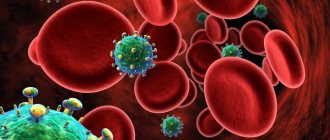Self-hypnosis is the ability of a person to suggest to himself (usually in a trance state) using thoughts, images, ideas, imagination and visualization, certain specific attitudes of a positive or negative nature. It has another name: the placebo effect.
Often there is unconscious self-hypnosis for illnesses or, on the contrary, self-hypnosis for recovery, for increasing self-confidence, for realizing what has been planned, and so on.
Self-hypnosis: what is it?
As you can see, experts from various industries offer it as an alternative to conventional methods. And they explain: self-hypnosis is a process of reassurance addressed to oneself. With its help, the level of self-regulation increases, which allows a person to evoke certain emotions, skillfully manipulate memory and imagination, and control somatic reactions. In a word, this is one of the forms of so-called mental control of oneself, one’s own body and feelings.
Self-hypnosis is especially helpful against diseases: using its various methods, patients overcome internal negative attitudes, while helping professional therapy aimed at healing. They are taught to convince themselves that the illness will definitely recede and that they can get rid of it easily and forever. Doctors say: confidence reaches such a high level that even seriously ill people begin to get better just before our eyes. Their depression goes away and their strength is restored to fight for life.
Self-hypnosis bases
To effectively use autosuggestion, you first need to become familiar with its basics. Below we provide you with rules that must be observed in this case if you want to get a suitable result:
- Be 100% confident in the final action. The presence of hesitation calls into question the effectiveness of the technique. The presence of your fears and prejudices can prevent you from achieving your goal, which will ultimately end in complete failure.
- Positive thinking. If you use the word “not” in your own speech, your brain automatically begins to be programmed to defeat. Therefore, you need to try to construct your judgments in such a way that they do not contain negative formulations. For example, you decide to lose weight and if you have a desire to eat something harmful, you convince yourself that you do not feel hungry. But soon you will feel a treacherous nausea. It would be more accurate to convince yourself that at this moment you are full and feel great.
- Don't force yourself. If you resort to coercion, you will face constant internal conflict. And fighting with yourself is the worst thing you can think of. Therefore, do not try to force yourself, but try to use persuasion to find a compromise.
- Focus on true time. You will never correct the mistakes of the past, and thinking about the distant future is also not very good. Therefore, place the right emphasis on the real - concentrate on the present moment.
- Give yourself the right settings. It is important that they be short and succinct, yet clearly and correctly formulated. If you spend a long time thinking about the formulation of your own desire, it will acquire blurred contours and will not act. Try to repeat your settings more often.
What can be achieved?
Self-hypnosis treatment is as old as the world. Even ancient thinkers - Aristotle, Plato and Hippocrates - noticed the peculiarities of the impact of his thoughts and words on human health. They found out: the more impressionable and emotional a person is, the faster and more effectively the principle of self-hypnosis acts on him. In addition, children lend themselves well to indoctrination: being too receptive, they react quickly to the situation, adapt without problems and are influenced.
Such individuals are the easiest to work with, doctors say. Self-hypnosis can actually achieve positive changes in their body, which is confirmed by clinical tests. For example, if a patient convinces himself that he is hungry, his level of leukocytes in the blood immediately changes. And an individual who imagines cold and winter develops so-called goose bumps, the temperature drops, and gas exchange accelerates. If you conduct self-hypnosis sessions every day, you can subjugate all the important functions of the body.
Who is Emile Coue?
Emile Coue is a psychologist and pharmacist who developed a treatment method based on self-hypnosis.
Coue lived in France between 1857 and 1926 and owned his own clinic. Subsequently, he wrote down all the results of his method in the book Conscious self-hypnosis as a path to self-mastery: methods, techniques, practice (the book is among the top 100 books on the power of thought).
But I won’t write much about it, let’s get to the point.
Cause of diseases
Where do ailments come from, if you can get rid of them so easily - by the method of ordinary suggestion? Is it really our spiritual world, and not the physical body, that is the main reason for their occurrence? Indeed, it is so. Many diseases begin to destroy our body, forming as the consequences of a painful imagination, which can be cured absolutely with the help of phrases and thoughts. Psychologists say: sentences during such a kind of auto-training must be short, they should be pronounced in the first person, without using the negative particle “no”.
If you construct the text correctly, self-hypnosis against diseases will work with a bang. The main thing is that your speech contains affirmative phrases “I can...”, “I am strong...”, “I will definitely overcome...” and so on. The voice must be firm, confident, even tough. Thus, a person will not only cope with the disease, but also revive his performance, improve his well-being, increase self-esteem and correct his mood.
Diagnosis of psychosomatic disorders
It’s rare that a doctor will immediately suspect a patient is psychosomatic. Typically, such diseases do not differ in appearance from somatic diseases; for example, it is never possible to immediately determine whether a patient’s gastritis is caused by the Helicobacter bacterium or some kind of experience. Very often, doctors diagnose problems with the gastrointestinal tract, cardiovascular system, nervous system or immunity, without even knowing about the patient’s mental trauma.
What does such a diagnosis of the disease lead to? The doctor prescribes medications to the patient that should alleviate his condition and cure the disease. The prescribed treatment really alleviates the symptoms, and the doctor happily releases the patient. But, after the end of the course of treatment, after some time, all the symptoms return, and the doctor begins to look for more effective treatment and stronger medications.
A few years later we have a chronically ill person who takes a mountain of medications and suffers from side effects and the inability to recover. At the same time, in order to alleviate his condition and completely solve the problem, it was necessary to consult a psychotherapist from the very beginning, but either the patient was embarrassed to tell the doctor about his problems, or the doctor did not ask, or both did not suspect it in time, and time was lost.
Since psychosomatic diseases arise as a result of mental disorders affecting the human body, several specialists should be involved in the diagnosis and treatment of these diseases: a psychotherapist and a specialized specialist - a therapist, a neurologist, a cardiologist, an endocrinologist. You need to treat both the soul and the body at the same time.
The role of the psychotherapist is to determine the nature of the emotional state that caused the disease and help the patient cope with them. The development of psychosomatic diseases can be provoked not so much by the presence as by the unexpressed and suppressed emotions of negative emotions. Suppressed and muffled emotions gradually burn out, destroying the human body and provoking the onset of illness.
Almost any negative emotion that is carefully hidden, be it fear, anger, sadness or hatred, sooner or later can find its way out in illness.
For what diseases is self-hypnosis most effective?
It is clear that you will not be satisfied with auto-training alone. If you do not take medications prescribed by a doctor, avoid necessary procedures and do not adhere to a daily routine, no words can heal the patient. Phrases can only be an addition to the main therapy. In this case, they will become effective, especially in the following situations:
- During a long-term or chronic illness.
- When a person undergoes rehabilitation after an accident, injury, or heart attack.
- The patient has been suffering from psychological problems, neuroses, and depression for a long time.
- He was diagnosed with bronchial asthma, cancer, gastritis, sexual dysfunction, angina pectoris, and so on.
A competent attitude in self-hypnosis against a specific disease is a powerful weapon for the patient. The best time to practice is late evening or early morning. During these periods, a person is relaxed, in a half-asleep state, and his brain is least excited, and therefore more open to the perception of fresh and necessary information.
Emetophobia: fear of vomiting - causes, symptoms and treatment
09.12.2019
Nausea and vomiting can be very distressing. Although temporary distress is normal, many people are actually afraid of vomiting. This type of intense fear is known as emetophobia. A person suffering from emetophobia is not actually sick, but is simply afraid of vomiting.
Derived from the Greek word "emein", which means "the act of vomiting". This phobia is not very popular among professionals and is often misdiagnosed as other mental disorders. However, the fear of vomiting exists and can completely ruin your life. A phobia is indicated by an irrational and excessive fear of vomiting or seeing other people. A person can go to the extent of developing ritual cleanliness and eating habits to completely avoid the problem. The phobia is often misunderstood for other conditions, described below.
Anorexia nervosa
This is an eating disorder in which a person avoids nutritious food in order to stay thin. However, emetics cause anorexia . Because a person deliberately removes food through vomiting. Thus, he does not actually suffer from an eating disorder .
Fear of society
Social phobia is a specific fear of social conditions. For example, a person avoids large crowds of people. He has an obsessive idea that he will see vomit and have attacks of nausea .
Obsessive-compulsive disorder (OCD)
People suffering from emetophobia develop a tendency toward cleanliness, washing, and ritualistic eating habits. However, this is entirely caused by a fear of vomiting and not OCD.
Disastrous Event
Emetophobia can be hugely the result of an accident where a person experiences horrific vomiting or sees someone else suffer from it. This is very common in people who have had health problems that cause constant vomiting. This type of health disorder can make a person aware that they are very sick.
Other phobias and mental disorders
Many other phobias and disorders, such as panic attack, social phobia , agoraphobia, and other anxiety conditions, can cause nausea .
Symptoms of emetophobia
The main symptoms that can occur in anyone (both children and adults) suffering from emetophobia are:
- constant and irrational fear of abandonment;
- avoids any parties and holidays so as not to eat and get sick;
- avoids amusement parks, long journeys, hotels and restaurants where he may see people vomiting;
- Never leave the house during flu season or under any other circumstances when he might vomit;
- extremely attentive to health and hygiene;
- constantly checks food before eating;
- panic attacks accompanied by physical signs such as shaking, dizziness or fainting, rapid heartbeat, sweating , muscle tension, breathing problems, and body numbness.
Treatment
Emetophobia can be treated using a healthy combination of psychotherapy and medications. The mainly used treatment procedure includes:
- Cognitive Behavioral Therapy (CBT) - The therapist may use talk and even hypnosis to understand the negative images associated with the phobia in the person. Through CBT sessions, the therapist also teaches and helps the patient to recognize the phobia . Eventually, the person begins to feel lighter;
- Medications – Commonly used medications to treat emetophobia are antidepressants . brain chemicals such as serotonin, which helps maintain a person's good mood and temperament.
Published in Psychotherapy Premium Clinic
The Placebo Secret
Considering all of the above, doctors began to actively use suggestion. They came up with a placebo - a so-called dummy (solution, injection or tablet) that does not contain drugs. They were given to patients, assuring them that with the help of a miracle cure they would definitely be able to overcome their illness. Taking a placebo, people actually got better - this was the effect that self-hypnosis had on recovery. The American anesthesiologist Henry Ward Beecher first used a pacifier in 1955. He fed simple sugar pills to patients, telling them they were powerful painkillers. And indeed, in a third of cases, the pain went away and people felt better.
Or, as an example, we can cite the practice of the Italian doctor Fabrizio Benedetti. He treated for Parkinson's disease, but instead of the usual medicine he gave the patients a solution of table salt. The effect was similar: most people experienced positive dynamics. It is clear that before the start of such an experiment, doctors weighed the pros and cons and held consultations so as not to harm the health of the subjects.
Impact
How does self-hypnosis work? It has helped against diseases more than once, so scientists decided to conduct a detailed analysis of its effect on the body, what happens on the physical level. By scanning the patients' brains, they discovered the following: in response to taking a placebo and being assured of the effectiveness of the therapy, neurons began to produce endorphins - natural narcotic substances that can relieve pain by blocking nerve endings. As a result, the person immediately felt much better.
It is a well-known fact: people use only a small part of the capabilities of their own brain, so it is not surprising that ordinary self-hypnosis can sometimes truly work wonders, saving patients even from a complex form of cancer. Of course, auto-training does not always help. For example, he is completely powerless in cases where people with mediocre intelligence have convinced themselves that they are geniuses. One way or another, there are hidden reserves in each of us, so we need to try in practice any method that promises to get rid of an obsessive illness.
Development mechanism and distinction criteria
Each activity, including breathing, is regulated by a specific part of the brain. In a state of stress and nervous overstrain, the central and peripheral nervous systems fail. Control over the breathing center in the brain is lost, overexcitation spreads, resulting in faster breathing.
The lungs become overfilled with air, causing hypocapnia, that is, the amount of oxygen in the blood increases excessively, and carbon dioxide decreases below normal. This imbalance of gases causes an attack of psychogenic shortness of breath.
Despite the fact that the symptoms of its manifestation are similar to true shortness of breath, there are still some criteria that allow it to be differentiated:
| Types of shortness of breath Criteria | Psychogenic | True |
| Cause | Examination of internal organs fails to detect | Pathology of the heart, kidneys, lungs, etc. |
| Bodily symptoms | None | Pale or cyanotic skin, barrel chest, edema |
| Changing body position | Does not affect breathing pattern | A change in position can alleviate or provoke a pathological symptom. It often intensifies especially after physical activity. |
| Nature of violations | Fickle | Constant |
| Periodicity | It worsens due to the weather, at certain times of the day (for some, attacks occur in the morning, for others - at night). It appears more often in spring and autumn. | |
| Cough | Not controlled by medications | In some cases, it can be treated with medication |
| Switching attention | All symptoms go away if you move the conversation in a different direction | Shortness of breath persists, no connection |
Methods
The basis of any self-hypnosis are thoughts, ideas and sensations. Based on this, psychologists identify several of the most effective methods:
- Affirmations are repetitions out loud of stable phrases or verbal formulas: “I will overcome allergies...” or “I will have a strong immune system...”.
- Visualization - imagining yourself healthy, cheerful, energetic.
- Meditation is a long stay in a trance, when a person combines the first two methods mentioned above.
- Self-hypnosis is a powerful technique that allows the patient to enter a trance and program themselves to heal.
- Recapping is experiencing the situation again. If a person is injured after an accident, he mentally replays the event in his head, coming up with a happy outcome. Thus, it lets the body know that nothing happened.
- The Shichko method is a written statement of your desire or aspiration.
These are the most popular ways in which you can carry out self-hypnosis. Self-hypnosis methods will program your consciousness for a speedy recovery.
Where do they teach?
Self-hypnosis cures all diseases... One can argue with this statement: sometimes the situation is critical and nothing can save the patient. But in most cases, self-hypnosis still brings positive results. The main thing is to master its technique, the main components of which are will and patience. In order to competently conduct therapy sessions, it is better to undergo training from a specialist: basic methods are taught in rehabilitation centers, oncology clinics, and specialized hospitals. These institutions employ qualified psychologists who will help you master the basics of self-hypnosis and purposefully use them at home.
The course for a young fighter lasts about three weeks. Upon completion, you can independently put into practice all the types of self-hypnosis described above. It will be good if your loved ones, relatives and friends support you in this simple game and constantly emphasize that you will definitely be able to get rid of this ill-fated disease.
Healing by self-suggestion
Our pathologies are our spiritual experiences, all the worries and horrors. To gain health, you need to remain calm and confident in your own abilities, and also think much less about negative aspects.
Self-hypnosis or the placebo effect is a great power that will help you change your reality. Using the power of self-hypnosis, you will get rid of various physical and psychological pathologies, and you can also achieve a state of internal harmony and happiness.
Source: tayniymir.com
Share:
Technique
Convincing yourself that black is white is very difficult, you say. And you will be absolutely right. How can you convince yourself that you are as healthy as an ox, if it’s even difficult to pronounce words, and your body aches from pain and physical suffering? In fact, it is possible to achieve what you want; to do this, you only need to sincerely believe in the power of the spoken phrases or the effect of the adopted remedy. The result will depend on how convinced you are of miraculous salvation.
As an example, we can conduct a small experiment. Lie down on a comfortable couch, take a comfortable position, close your eyes and imagine a sultry July day: the sun is at its zenith, its rays mercilessly burn the green grass, you can’t breathe. Well, is there sweat on your forehead and your throat is dry? Why? Yes, because imagination is the most effective tool that uses self-hypnosis against diseases. Practice: soon, with the power of just your thoughts, you will be able to create real miracles. Remember that faith is the starting position leading to the point of achievement, and fantasy is the path itself, thorny and not always easy.
Treatment with the power of thought: the method of the French doctor Emile Coue
Healing with the power of thought is possible.
It is difficult to convey in words the range of emotions that a terminally ill person may experience upon realizing this fact.
It is for such people and their loved ones that I am writing this article today.
Today we will turn to history, to the beginning of the 20th century, when the famous French doctor Emile Coue lived and worked, who in his own clinic treated people with the power of thought.
Emile Coue's method is based on special self-hypnosis.
So that you, dear readers, do not get confused, I will note that the concepts of “healing with the power of thought” and “healing by self-hypnosis” are identical.
The essence of self-hypnosis is that a person specifically thinks the thoughts he needs.
The essence of the power of thought is that a person specifically directs his thoughts in the right direction.
In the first and second cases, the same process of working with one’s own thoughts occurs.
Read on and you will learn how to start healing yourself with the power of thought today:
- Who is Emile Coue?
- Theory and basis of the method of treatment with the power of thought
- Self-hypnosis treatment
- The practice of healing with the power of thought
- Examples of cured patients by Dr. Coue
Who is Emile Coue?
Emile Coue is a psychologist and pharmacist who developed a treatment method based on self-hypnosis.
Coue lived in France between 1857 and 1926 and owned his own clinic. Subsequently, he wrote down all the results of his method in the book Conscious self-hypnosis as a path to self-mastery: methods, techniques, practice (the book is among the top 100 books on the power of thought).
But I won’t write much about it, let’s get to the point.
Theory and basis of the method of treatment with the power of thought
The basis of the Emile Coue method is the concept that imagination is stronger than willpower.
the power of imagination picturesHave you ever thought about this?
Personally, I don't quite understand what Coue means and why this is the basis of his method.
Let's figure it out together.
The will, writes Emile Coue, in which we so firmly believe, inevitably suffers defeat whenever it comes into conflict with the imagination.
This law is immutable and knows no exceptions.
This is blasphemy! this is a paradox! you say. Not at all. This is the truth, the purest truth, I will answer you. (Here and below are quotes from Coue’s book. Read my comments in italics).
If you want to make sure of it, open your eyes, look around you and try to understand what you see.
You will understand then that my statement is not a theory taken out of thin air or generated by a diseased brain, but only a simple expression of what exists in reality.
Examples of how the power of imagination works
Suppose that in front of us on the floor is a board 10 meters long and 25 centimeters wide. It goes without saying that everyone can easily walk along it from one end to the other and never stumble. Let us, however, change the conditions of our experiment and assume that the same board connects two towers of a high cathedral in the form of a bridge.
Would anyone be able to take even a few steps across such a bridge? Of course not. You will not take even two steps before you will be overcome by trembling, and, despite all the effort of your will, you will inevitably fall.
Why, however, do you not fall when the board is on the floor, and why must you fall if it is attached high above the ground?
Simply because in the first case you imagine, imagine that it is not at all difficult for you to walk from one end of the board to the other, whereas in the second case the idea arises in your imagination that you cannot do this.
Note to yourself that you had a desire to walk along the board: it was enough for you, however, to imagine that you could not walk, and it really became absolutely unthinkable for you.
Dear readers, at this moment, in addition to the key to treatment with the power of thought, you can note for yourself the key to the fulfillment of desires.
Roofers and carpenters walk freely on boards located at great heights, but precisely because they develop an idea of this possibility.
The feeling of dizziness is caused only by our idea that we might fall. This idea instantly turns into reality, despite all the tension of our will; This transformation occurs the more quickly the more we struggle with our ideas.
Let's take a person suffering from insomnia. When he makes no effort to fall asleep, he lies in bed completely calm. However, the more he wants and tries to fall asleep, the more difficult it will be for him and the more excited he will be.
Each of us has probably observed that when we forget someone’s name and rack our brains trying to remember it, it never comes to mind; as soon as, however, the thought: “I forgot,” we replace it; the other: “I’ll remember now,” - so after a very short time, without any tension on our part, the name really pops up in our consciousness.
Who among us has not experienced a fit of laughter? And haven’t we noticed that laughter becomes stronger and stronger the more we try to restrain ourselves from it?
What happens in us in all these cases? I don’t want to fall, but I can’t hold on; I want to sleep, but I can’t; I want to remember this person’s name, but I can’t; I would like to avoid the obstacle, but I cannot; I would like to stop laughing, but I can’t.
It is quite obvious that in all these conflicts, every time, without exception, the imagination takes precedence over the will.
Panurge undoubtedly took into account the contagious effect of example, or more precisely, the influence of imagination, when, while sailing on a ship, wanting to take revenge on a merchant traveling with him, he bought the largest ram from him and threw it into the sea: he knew that the whole herd would immediately will rush after him.
We humans also have this herd feeling to a greater or lesser extent.
Contrary to our wishes, we inevitably follow the example of others, only because we imagine that we cannot do otherwise.
I could give a thousand more similar examples, but I'm afraid to tire your attention. However, I cannot pass over in silence one more fact, which will clearly show you how incredible the power of the imagination, in other words, our unconscious self, is in its struggle with our will.
There are many alcoholics who really want to stop drinking, but who cannot resist drinking wine. Ask them, they will tell you quite sincerely that they have a great desire to start a sober lifestyle, that wine is simply disgusting to them, but that they are irresistibly drawn to wine, against their will, despite the fact that they are well aware of the harm it hurts them.
In the same way, many criminals commit crimes against their will, and if you ask them about their motives, they will answer you: “I could not resist, I was pushed by something that was stronger than me.”
Both alcoholics and criminals tell the honest truth: they are forced to do what they do, and only because their imagination tells them that they cannot resist.
No matter how proud we are of our free will, no matter how firmly we believe that we are free in our actions, in reality we are only pathetic puppets in the hands of our imagination. But as soon as we learn to control our imagination, this sad and insignificant role of ours immediately comes to an end.
What to do with all this, you ask.
Coue gives the answer.
In his clinic and with all his patients, he practiced suggestion and self-hypnosis.
It is self-hypnosis, the suggestion of images into the subconscious that allows us to believe in the possibility that we are healthy.
And today, at home, you can easily begin to treat yourself.
Self-hypnosis treatment
The method of self-medication is extremely simple.
Without wanting it or noticing it, completely unconsciously we use it every day from our very birth.
Unfortunately, however, we often use it incorrectly and to our own detriment.
This method is nothing more than self-hypnosis.
Instead of accepting, as usual, unconscious self-suggestion, it is necessary to use conscious self-suggestion. This is done as follows.
First, you should carefully consider the object of the proposed self-suggestion and only then, depending on certain arguments of the mind, repeat several times, without thinking about anything extraneous:
“This will come true or, on the contrary, it will pass, it will be so or it won’t be...”, etc.
If our unconscious “I” accepts this suggestion, that is, turns it into self-suggestion, then the suggested idea will be realized with literal accuracy.
In this understanding, self-hypnosis coincides with what I understand by hypnotism, which I define in the simplest way as the influence of imagination on the mental and physical nature of a person.
The influence is undeniable.
Rather than go back to previous examples, I will give a few others.
If you convince yourself that you can do something that is in itself possible, then you will do it, no matter how difficult it may be for you.
If, on the contrary, you imagine that you cannot do the simplest thing, then you will actually be unable to carry it out and the most insignificant hillock will seem to you an insurmountable mountain peak.
Try to retire in your room, sit comfortably in a chair, close your eyes so as not to be distracted by anything extraneous and think for a few seconds only about one thing: “So-and-so is passing,” or “So-and-so is coming now.” "
If, indeed, the result of this is self-hypnosis - in other words, if your unconscious “I” assimilates the thought that you tried to introduce into it, then you will immediately, to your surprise, be convinced that this thought has in fact turned into reality.
An essential feature of thoughts perceived through autosuggestion is that they live in us unnoticed by ourselves and that we learn about their existence only on the basis of the external manifestations that they cause.
In this case, however, it is necessary to observe an extremely important and essential rule: the use of autosuggestion must be done without any participation of the will.
For if the will is in conflict with the imagination, if you think: “I want such and such to happen,” while your imagination says: “No matter how much you want it, it still won’t happen.” ”, - then as a result you will not only not achieve what you want, but will get the completely opposite effect.
Healing with the power of thought: practice
Every morning when you wake up, and every evening before you go to sleep, you should close your eyes and, without trying to concentrate on what you are saying, say twenty times - counting on a string with twenty knots - and at the same time loud enough to hear own words - the following phrase:
“Every day I feel better and better in every way.”
Since the words “in all respects” refer to absolutely everything, it is useless to use, in addition, special self-hypnosis.
This self-hypnosis should be done as simply as possible, directly, mechanically, and therefore without the slightest tension. In short, the formula should be pronounced in the tone in which prayer is usually read.
(Friends, I told you about a similar effect in an article about self-fulfilling prophecies, when I wrote that the common feature of “fulfilling words” was that they were said casually, as if between times).
In this way, the formula - through the organ of hearing - penetrates mechanically into our unconscious “I” and, having penetrated there, immediately has a corresponding effect.
This method must be applied throughout life: it is as preventive as it is healing.
If during the day or night you experience a physical or mental illness, then, first of all, you must assimilate the firm confidence that you will not consciously intensify it even more, but, on the contrary, will make it pass as quickly as possible.
After this, try to remain completely alone, close your eyes, and, stroking your forehead with your hand, if we are talking about mental suffering, or a sore spot, if you have a physical ailment, repeat out loud as quickly as possible: “It passes, it passes, it passes! " until you feel better.
With some skill, physical or mental pain disappears after 20–25 seconds. If necessary, this technique can be repeated several times.
By the way, if you are in pain, about
Hypnosis
If for some reason you are unable to conduct a home therapy session, you can seek help from a psychologist. Usually he uses hypnosis to give the patient certain instructions aimed at his speedy healing. Experience shows that in a special state of consciousness, the instillation of mental reactions or beliefs occurs best. During hypnosis, even the most complex and technically difficult suggestions can be made.
It should be borne in mind that the method can only be used when the person is not very deeply immersed in an artificially induced sleep. A strong degree of hypnosis, called the lethargic phase, is absolutely incompatible with suggestion. On the contrary, light hypnosis can convince even the most unreceptive person. Before immersing the patient in this state, the doctor conducts conversations with him, studying life positions, emotional background, temperament and other characteristics of the individual. Hypnosis, self-hypnosis, written self-hypnosis, auto-training in front of a mirror and other methods are effective only if a person really sincerely wants to recover and forget about the problem that is poisoning his life forever.
Self-hypnosis of diseases
There is such a thing as iatrogenic disease, which is a psychological disorder provoked by the careless expression of a doctor. Thus, for particularly impressionable patients, because of an imprudent word uttered by a doctor, a conviction arises in the presence of a severe pathology. Although this condition may develop without the doctor’s fault.
Suspicious people tend to establish different diagnoses for themselves without the help of others. The most unsafe thing in this case is that as a result of such self-hypnosis, a person actually faces a real pathology.
If you focus on yourself, different configurations of negative disposition begin to occur in your body. Gastrodigestive pathologies develop most rapidly. A person under bad self-hypnosis experiences a state of stress, and stress provokes almost all real diseases.
conclusions
After reading the above information, you were able to see the power of self-hypnosis. With its help, you can not only eliminate psychological problems, but even some physical conditions. Self-hypnosis destroys diseases, helps to gain self-confidence, achieve love from the opposite sex and success at work. It is present in every moment of our life: on the street, at home, among friends. Without noticing it ourselves, we easily succumb to suggestion from the environment, which can instill not only certain beliefs, inclinations and sympathies, but also radically change the behavioral model.
Psychological exchange with representatives of society is acceptable if it has a positive content and is designed to make your existence easier. In the event that the environment, through suggestion, tries to lead you down the wrong path, you need to fight external influence. All with the same methods of self-hypnosis about which so much has been said.











